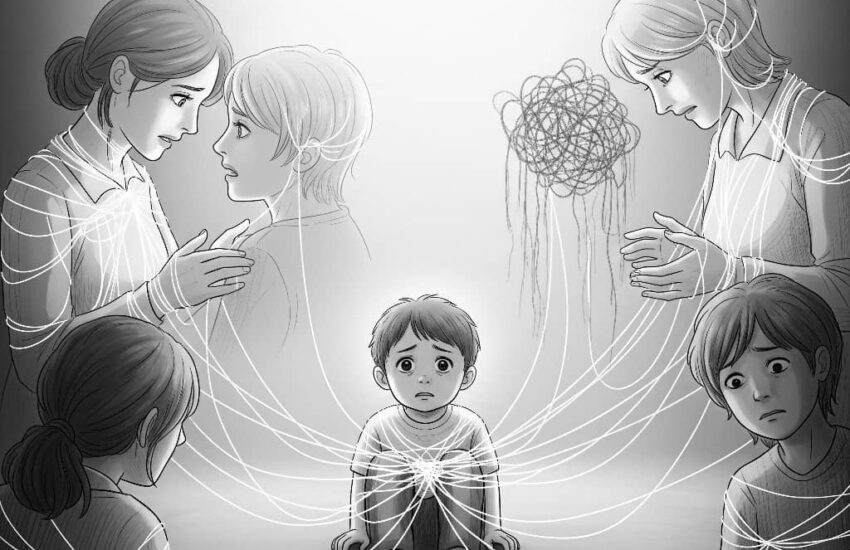Our earliest bonds influence how we love and connect as adults. Find out how attachment-based therapy helps heal emotional wounds and create healthier relationships. Jasmine sat in my office, frustrated tears streaming down her face. “I do it every time,” she confessed. “The moment someone gets too close, I find an excuse to push them away. Then I panic when they start to leave.” At 34, she could intellectually understand her relationship struggles, but emotionally, she kept replaying the same painful scenarios.
This is the power of attachment wounds, the invisible emotional blueprints formed in our earliest relationships that continue to shape how we connect with others throughout our lives. Attachment-based therapy offers a compassionate approach to identifying these patterns, understanding their origins, and ultimately rewriting our relational stories.
How Our Earliest Bonds Shape Us
Developed by psychiatrist John Bowlby and expanded by psychologist Mary Ainsworth, attachment theory reveals how the quality of our childhood caregiving relationships creates lasting templates for how we approach intimacy, handle conflict, and view ourselves in relationships.
Children who experience consistent, responsive care typically develop secure attachment. They grow up with an innate sense that their needs matter and that others can be relied upon. However, when care is inconsistent, emotionally unavailable, or frightening, children adapt in ways that can later hinder adult relationships.
Those with anxious attachment often fear abandonment and seek constant reassurance. Adults with avoidant attachment may struggle with intimacy and vulnerability. Those with disorganized attachment frequently experience confusing mixes of craving connection while fearing it. These aren’t character flaws, they’re survival strategies that once served a purpose but may now limit relational fulfillment.
The Healing Process in Attachment-Based Therapy
Attachment-based therapy creates a safe space to explore these patterns without judgment. The therapeutic relationship itself becomes a laboratory for new ways of connecting. Rather than simply analyzing past wounds, clients experience corrective emotional experiences in real time with their therapist.
The work often begins with identifying recurring relationship patterns. A client might notice they consistently choose emotionally unavailable partners or that they shut down during conflict. Together with their therapist, they explore how these behaviors might have served them in their original family context.
Gradually, clients learn to recognize their attachment triggers, those moments when old wounds get activated in current relationships. With this awareness comes the ability to respond differently, interrupting automatic reactions and choosing new ways of engaging.
Building Secure Attachment in Adulthood
The beautiful discovery of attachment-based therapy is that our attachment styles aren’t fixed for life. Through consistent, attuned relationships, whether with therapists, partners, or friends, we can develop earned secure attachment.
This process involves learning to identify and articulate emotional needs, tolerate the vulnerability of intimacy, and develop healthier conflict resolution skills. It means recognizing that protest behaviors like excessive texting or emotional withdrawal often backfire, and that secure relationships allow for both connection and individuality.
Many clients find that as they heal their attachment wounds, they naturally begin attracting and choosing different kinds of partners. They report feeling calmer in relationships, more able to trust without losing themselves, and more resilient when facing relational challenges.

The Ripple Effects of Healing
As attachment wounds heal, the benefits often extend far beyond romantic relationships. Clients frequently report improvements in friendships, workplace dynamics, and even their relationship with themselves. The anxious attacher learns self-soothing techniques that reduce dependency on others’ reassurance. The avoidant attacher discovers the joys of vulnerability without fear of being overwhelmed.
Perhaps most profoundly, many clients develop more compassionate understandings of their caregivers. They come to see that their parents’ limitations often reflected their own attachment histories rather than any deficiency in the child. This realization can be powerfully freeing, allowing clients to honor their past while no longer being bound by it.
Attachment wounds may shape us, but they don’t have to define us. Through the patient, relational work of attachment-based therapy, individuals can heal old hurts, develop new ways of connecting, and ultimately experience the secure, fulfilling relationships they deserve. The journey requires courage and commitment, but as Jasmine discovered, the freedom to love without old fears is worth every step.
References
Rembrandt, V. (2024). Understanding attachment-based therapy: A path to healing through relationships. Trauma & Acute Care, 9*(2), 19. https://doi.org/10.36648/2476-2105-9.2.19
Gleiser, K. A. (2024, August 1). Seeing the invisible: The role of recognition in healing from neglect and deprivation. AEDP Institute Journal. https://aedpinstitute.org/journal/seeing-the-invisible/
TalktoAngel. (n.d.). Attachment therapy. https://www.talktoangel.com/therapies/attachment-therapy
The Embody Lab. (2022, November 30). What is somatic attachment therapy? https://www.theembodylab.com/blog/what-is-somatic-attachment-therapy
Charlie Health. (2025, February 7). Attachment-based therapy can help you build healthier relationships. https://www.charliehealth.com/post/attachment-based-therapy

